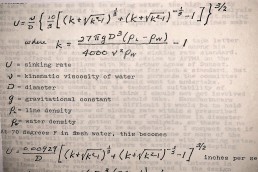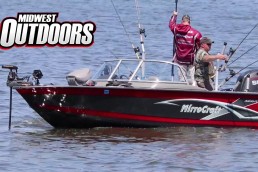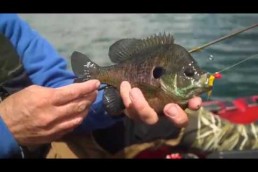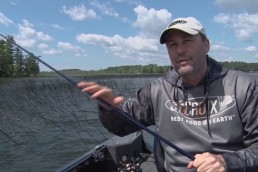Scientific Fishing Back Then
SHARE THIS POST
Recently, we acquired items from the Trig Lund Estate. Heddon hired Trig in 1945 and he developed many products that became very successful, including fiberglass rods.
He was later involved with Shakespeare. Visiting the Pflueger operations in Akron, Ohio, that Shakespeare had just acquired, he found employees in tears. It wasn’t just that they had lost their jobs, “Nobody cares about our history,” the receptionist sobbed. Workers were busy throwing the items from their archives, work benches, walls and desks into trash bins.
Trig convinced them to stop while he rented a big truck, making the employees rejoice that a savior of these important items had arrived in the nick of time. Pflueger had the most complete research department of any tackle company we know of.
A treasure trove of early fishing technology
Their sales and service reps bought any new products found in their travels. As these lures arrived, they were tagged with the date acquired, where, lure name, model and more. Then they were tested, paint analyzed, weighed and cataloged. This was industrial espionage of the highest level in the fishing tackle business. Some of our rarest items were part of this discovery.
Trig collected a file on the history of fly-tying. Yet, the work book that fascinates us now is titled “Sinking Fly Lines”. There are photos of fly-line towers for both sinking and floating lines located at Shakespeare’s Redditch, England location.
Are you enjoying this post?
You can be among the first to get the latest info on where to go, what to use and how to use it!
But what really amazes us are the mathematical computations including sinking rate analysis with even different sinking rates depending on water temperature. He comments, “I am particularly pleased at the agreement, (for joint research between the English and United States employees.)
The next sentences illustrate their extensive research. “I have improved my analysis somewhat since sending the computer output to you. Utilizing some better data about drag at low Reynolds numbers, and going through some tedious mathematics which do not involve a key simplifying assumption made in the earlier analysis, I get the following formula which differs noticeably from previous formula.
I will be happy to provide technical advice on sinking rate standards without charge to the American Fishing Tackle Manufacturing Association, (AFTMA), at no charge.”
Here’s hoping you are surprised and entertained in knowing more about our fishing history.
Dan Basore is a fishing historian and steward of the history of the sport. In his efforts to preserve fishing history, he is always on the lookout for information about early lure makers, old lures, pre-level wind reels, manufacturer catalogs, tournament casting items and the like. If you possess information or materials of this kind, please contact him at 630-393-3474 or by email at ollures@aol.com.
MWO
SHARE THIS POST
Did you enjoy this post?
You can be among the first to get the latest info on where to go, what to use and how to use it!
Dan Basore
Dan Basore is a fishing historian and steward of the history of the sport. In his efforts to preserve fishing history, he is always on the lookout for information about early lure makers, old lures, pre-level wind reels, manufacturer catalogs, tournament casting items and the like. If you possess information or materials of this kind, please contact him at 630-393-3474 or by email at ollures@aol.com.




